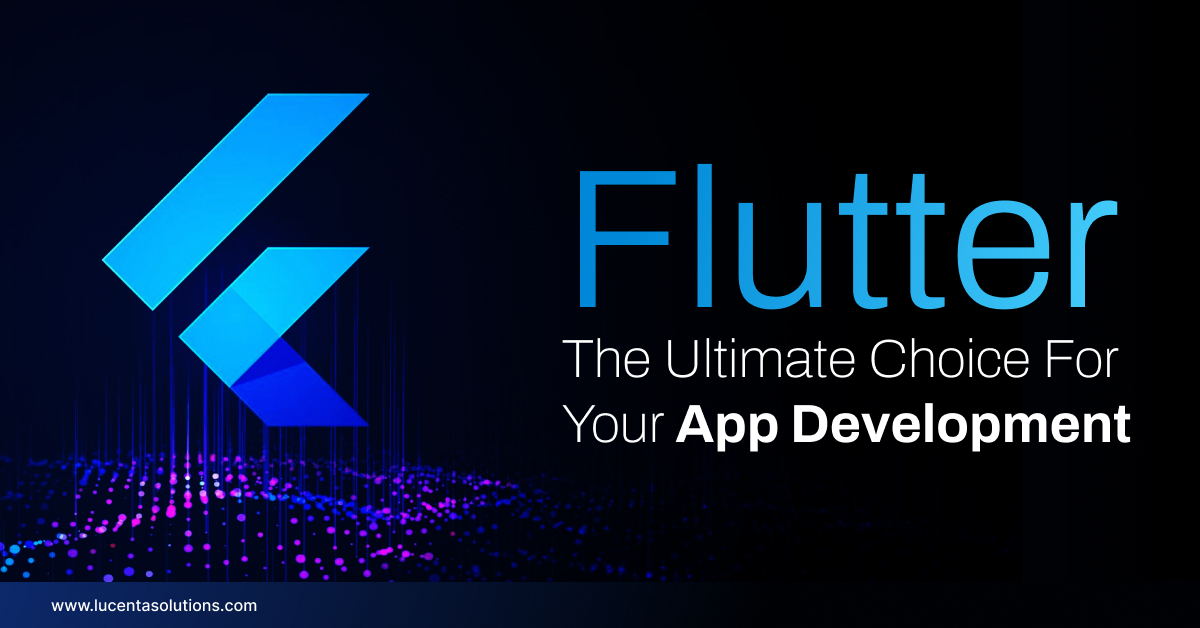Flutter: The Ultimate Choice For Your App Development
Flutter is one of the most potential tools for cross-platform app development powered by Google. Its popularity has overtaken common frameworks. According to the report, more than 2 million app developers have used Flutter. Besides, more than 85% of Flutter developers work on developing cross-platform app development. At present, the market share of Flutter is 1.17% for app development. This dynamic tool is evolving quite fast as it is an open-source platform with a huge community of developers.
Since Flutter is slowly capturing the market, brands are also investing for a better reach and user experience. According to the Flutter 2023 Strategy Document, by January 2023, there were over 700,000 apps built using Flutter. Some of the top brands using apps built with Flutter are-
- AppFlowy
- Rows
- Google Ads
- Google Pay
- SpaceX App
- eBay Motors
- Groupon
- BMW
- Croudsource
With the buzz going on, let us take a quick look into this dimension of app development and understand what it is all about.
What is Flutter?
Flutter is a powerful open-source UI development toolkit, a brilliant creation from Google. This comprehensive framework used a single codebasefor building natively compiled applications for mobile, web, and desktop from.
This versatile UI toolkit designed for creating native-feeling applications for mobile, web, and desktop platforms with a unified codebase. Ithas Cupertino widgets and Material Design. These elements are powered by the Dart programming language. These elements assist developers to craft stunning user interfaces that focus on native experiences. This framework ensures a natural and responsive appearance and maintains consistency with a single codebase.
Here are key features that make Flutter an excellent choice for your projects.
Cross-platform development: It allows developers to create applications that run perfectly on multiple platforms using different operating systems.
Hot Reload: The unique ‘Hot Reload’ feature enables developers to instantly see the impact of code changes. It enhances the development process by accelerating debugging and iteration.
Rich Widgets: Flutter provides a rich set of customizable widgets. These widgets allow developers to create visually appealing and consistent user interfaces across platforms.
Expressive UI: It enables the creation of expressive and flexible UIs with a reactive framework and a declarative syntax for a smooth and engaging user experience.
Performance: It delivers high-performance applications that rival those built with native development tools due to its compiled code.
Open Source and Growing Community: Developers benefit from active and expanding Flutter Groups. The community ensures continuous improvement, support, and a wealth of resources.
What sets Flutter apart is its unique mobile SDK, delivering a responsive style without relying on a Javascript bridge. This approach propels Flutter to a performance level that competes admirably with its direct counterpart, React Native. Notably, Flutter effortlessly integrates with diverse platforms, spanning Android, iOS, Linux, macOS, Windows, and even emerging technologies like Google Fuchsia applications.
What is Flutter used for?
Flutter finds versatile applications as a go-to framework for a myriad of purposes. Here are key areas where Flutter is extensively used:
- Mobile app development
This app development framework is extensively used for creating high-performance mobile applications with engaging user interfaces. It provides a native-like experience across all platforms makes it a preferred choice for mobile app development.
- Web app development
Developers can extend their application reach to the web, ensuring a consistent and responsive user experience. The framework’s adaptability across different screen sizes and resolutions makes it suitable for building web applications with ease.
- Desktop app development
Its versatility extends to the creation of desktop applications for Windows, MacOS, and Linux. This feature makes it a valuable tool for developers who are aiming to build applications that work flawlessly on various desktop environments.
- Embedded systems and IoT
Flutter is used in embedded systems and Internet of Things (IoT) projects. Flutter Habit enables different hardware platforms and efficient UI rendering make it a practical choice for developing applications in the IoT space.
- Enterprise applications
Flutter is used in developing robust enterprise applications, leveraging its ability to deliver consistent UIs and high performance across different platforms. This is particularly beneficial for businesses seeking a unified solution for varied device ecosystems.
- Experimental platforms
Flutter is exploratively used in emerging platforms, such as Google Fuchsia, showcasing its adaptability and forward-looking nature.
Why You Should Use Flutter for Your Projects?
Now that we have understood its uses, let us focus on why Flutter framework is beneficial for businesses.
- Flutter is Cross-Platform
Reinstating the same use, Utilizing this SDK empowers you to create applications that seamlessly operate across desktop, mobile, and web platforms, eliminating the need for distinct developers for each platform. By crafting the code just once in Flutter, you ensure the app’s consistent performance on all platforms, presenting a cost-effective solution for app development.
Moreover, the expeditious integration of new features becomes a breeze with Flutter, as updates are required only in the shared codebase. This streamlined approach not only conserves valuable time and resources but also allows you to focus on enhancing the app’s functionality and user experience, rather than being concerned about intricate platform-specific coding.
- Similar Business and UI Logic
While many cross-platform frameworks facilitate code sharing between platforms, Flutter stands out by allowing the sharing of both UI code and the UI itself—an aspect that distinguishes it from other frameworks. Unlike conventional cross-platform approaches that rely on platform-specific components for rendering, Flutter simplifies the process by requiring only a canvas to draw onto, eliminating the need for intricate property mapping layers.
This contrasts with the complexities of most frameworks that involve synchronizing data between framework widgets and platform-specific components. Flutter’s unique approach avoids the reliance on platform-specific UI components for rendering. Instead, it utilizes a canvas for drawing, streamlining the development process and eliminating the need for additional mapping layers. This not only simplifies rendering but also ensures consistent UI across various platforms.
- Hot Reload means Faster Development
The inherent convenience of hot reload facilitates seamless experimentation, UI construction, feature integration, and bug rectification. Operating by injecting updated source code files into the Dart Virtual Machine (VM), it dynamically updates classes with new fields and functions versions. Subsequently, the Flutter framework automatically reconstructs the widget tree.
The real-time nature of Hot Reload empowers developers to witness instant changes in their code, with updates appearing on the same screen within a sub-second timeframe after saving the modifications. This feature acts as a Flutter valvetotake the development process forward and encourages iterative testing and refinement. It contributes to a more agile and responsive app development environment.
- Customizable UI
Flutter facilitates effortless customization even for intricate UI designs, a feature often challenging on native platforms. Tasks like shared element transitions, shape, color, and shadow manipulations, clipping, and transformations are achieved effortlessly with Flutter, enhancing versatility without increasing workload.
With its robust graphics and animation libraries, Flutter empowers developers to craft visually stunning, responsive user interfaces adaptable to various screen sizes and aspect ratios on phones and tablets. Furthermore, Flutter supports 3D graphics, seamlessly integrating models and meshes from conventional tools like Blender.
- Faster Turnaround Time
The efficiency of Flutter surpasses native mobile app development, owing to its distinctive features:
- A unified codebase adaptable to six different platforms
- Pre-built, reusable, and customizable widgets and components
- Real-time code adjustments can be done without restarting the app.
This amalgamation accelerates the development process, saving time and enhancing the overall workflow efficiency for Flutter app developers.
Find Your Flutter App Development Partner!
Unlock the full potential of your app development journey with Lucenta Solutions. Elevate your app development usage using our expert Flutter team. From seamless cross-platform development to efficient customization and integration, we ensure your app reaches new heights of innovation and performance.
Embrace a future-ready approach with Lucenta Solutions — where your vision meets excellence in app development. Contact us today to embark on your Flutter-powered success story!




